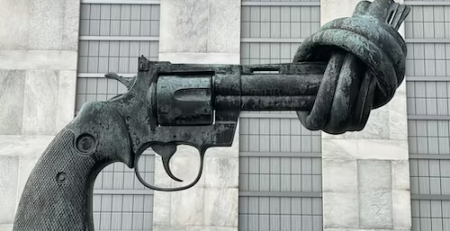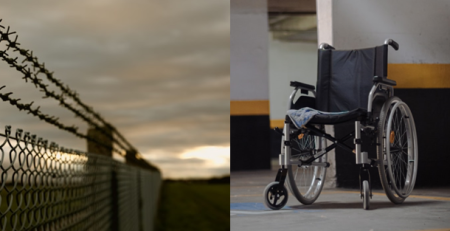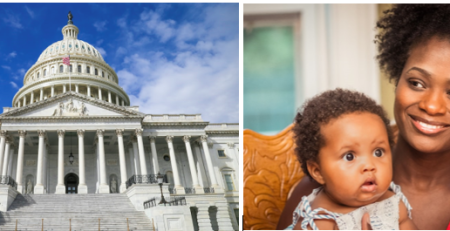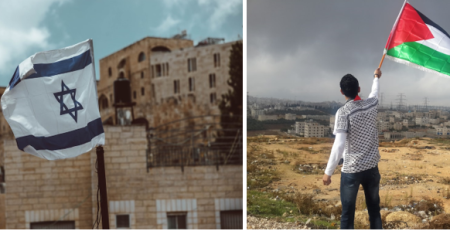Being an Ally to Native Americans
Once upon a time, there was a wonderful land, with forests and plains and mountains and it was filled with people who lived in harmony with the land. Some were farmers, some were hunters, some built cities, some moved frequently. Sometimes they fought, but generally they shared the land. There was enough to go around.
Unfortunately, there came a day when strangers from a faraway land discovered this place and wanted it for themselves. The strangers brought diseases that killed the first people, they then fought and killed the people, marching them off of the land so that the strangers could claim it for themselves. The strangers gave the land a name – America. And they carved it up into states. They razed the land to build cities, they polluted the land with factories, they dirtied the rivers and streams, knocked down the trees, pumped out gas and oil, often spilled, and tested missiles and nuclear weapons in the desert. All in the name of progress.
The first people were horrified but could do nothing. The ones who had survived were living on small parcels of land, often barren and without resources, and they struggled to find a voice that the strangers would listen to.
And then something changed. Another disenfranchised people, the African-Americans, decided to make their voices heard, and watching their success, the First People, Native Americans, began to push back as well. They found ways to make money on their land. They pushed for the eradication of stereotypes. They exposed the worst of the lies about how the strangers came to the land. They became activists for climate change and fought big businesses polluting the land. They lobbied for their needs with the Department of Interior. And some of the strangers began to listen. Began to recognize, not only the extent of the crimes committed against the First People, but also the right for the First People to live on their terms and be listened to as Americans.
There is no happily-ever-after to this story. It is a work in progress. But it’s a very important story, nonetheless.
It is only recently that I have deeply questioned my views on Native Americans, because my views are so colored by my elementary school education. Thanksgiving. Columbus Discovering America. Sitting Bull and Custer’s Last Stand. A trading post in Chicago. Playing cowboys and Indians. Scalping and feather headdresses and leather thongs. Redskins and mascots.
I don’t remember being told that there were 574 different tribes. I heard about maybe 20: the Apache, the Navajo, the Cherokee, the Chickasaw, the Choctaw, the Cree, the Kennebec, the Lakota, the Mohicans, the Seminole, the Shawnee, the Sioux, the Blackfoot, the Chippewa, the Comanche, the Hopi. It never occurred to me that the familiar names of places in America were actually Native American tribes whose land was stolen from them: Adirondack, Alabama, Assateague, Chesapeake, Piscataway, Dakota, Erie, Hackensack, Illinois, Iowa, Laguna, Manhattan, Massachusetts, Merrimack, Missouri, Mojave, Natchez, Omaha, Ottawa, Patuxent, Penobscot, Peoria, Tuskegee, Waco, Wampanoag, Wichita.
I don’t remember being taught about the Trail of Tears. And I mean *really* taught. That president Andrew Jackson, currently on the 20 dollar bill, had an Indian Removal Policy. Over 45,000 Native Americans from the Cherokee, Creek, Chickasaw, Seminole and Choctaw tribes were marched across the southern states to Oklahoma from as far away as Florida, as well as Georgia, Alabama, Louisiana and Mississippi in the 1830’s. All so that white settlers could farm over 25 million acres of land. More than 6000 Native Americans died as they walked to Oklahoma, at least 1,200 miles away from their homes, from disease, starvation and exhaustion. Twenty other Native American tribes were removed from their lands in the 1930’s as well, all up and down the eastern states.
So, where is this coming from, you may wonder. Well, I was in Tucson, AZ this week and went to see the San Xavier Mission. Little did I know that it was on a reservation. I went into the gift shop area and everywhere was the image of “The Man in the Maze”. So of course, I asked about it. It is part of the folklore of the Tohono O’odham, a tribe I have never heard of, and a woman from that tribe told me about it. She said that her tribe was a peaceful people. When whites came, when Apache warriors came, they would hide, and that is how they survived. The man at the top of the maze symbolizes the birth of the individual and the maze represents the journey of life. As one travels through the maze, there are many turns and changes. Going deeper into the maze, one gains wisdom, knowledge, strength and understanding. Toward the end of the maze with death approaching, one can repent, cleanse and reflect on all the wisdom gained in life, and then, once pure and in harmony with the world, accept death in the end.
Being an ally of Native Americans can be challenging because it requires such a paradigm shift. So many things that you have been taught are wrong. So many things that you grew up accepting are offensive. It is hard for me to come to terms with the fact that we are – I am – living on stolen land. Mount Rushmore was once a sacred ground for Native Americans. We need to give up phrases like “low man on the totem pole” and “pow-wow” and “spirit animal”. “Squaw” is derogatory, but there were over 600 places using “squaw” in their name. And having a Native American ancestor can create pain if it was the result of rape, (Sound familiar?), so claiming ancestry is tricky.
The reality that I live on stolen land is very hard for me because of the importance I place on the fact that I own a home. I’m not willing to give it back, and this challenges me. But I do want to be an ally. So I pay attention, I support, I learn. And when I do, I feel richer. Native Americans suffered from white mistreatment, not the same way that African-Americans did, but in ways that affect them to this day. If I don’t want anyone to denigrate, stereotype, mistreat and oppress my people, I shouldn’t let anyone do it to others.











Comments (2)
Real wonderful info can be found on web site.Leadership
… [Trackback]
[…] Read More Information here on that Topic: afrobougieblues.com/being-an-ally-to-native-americans/ […]